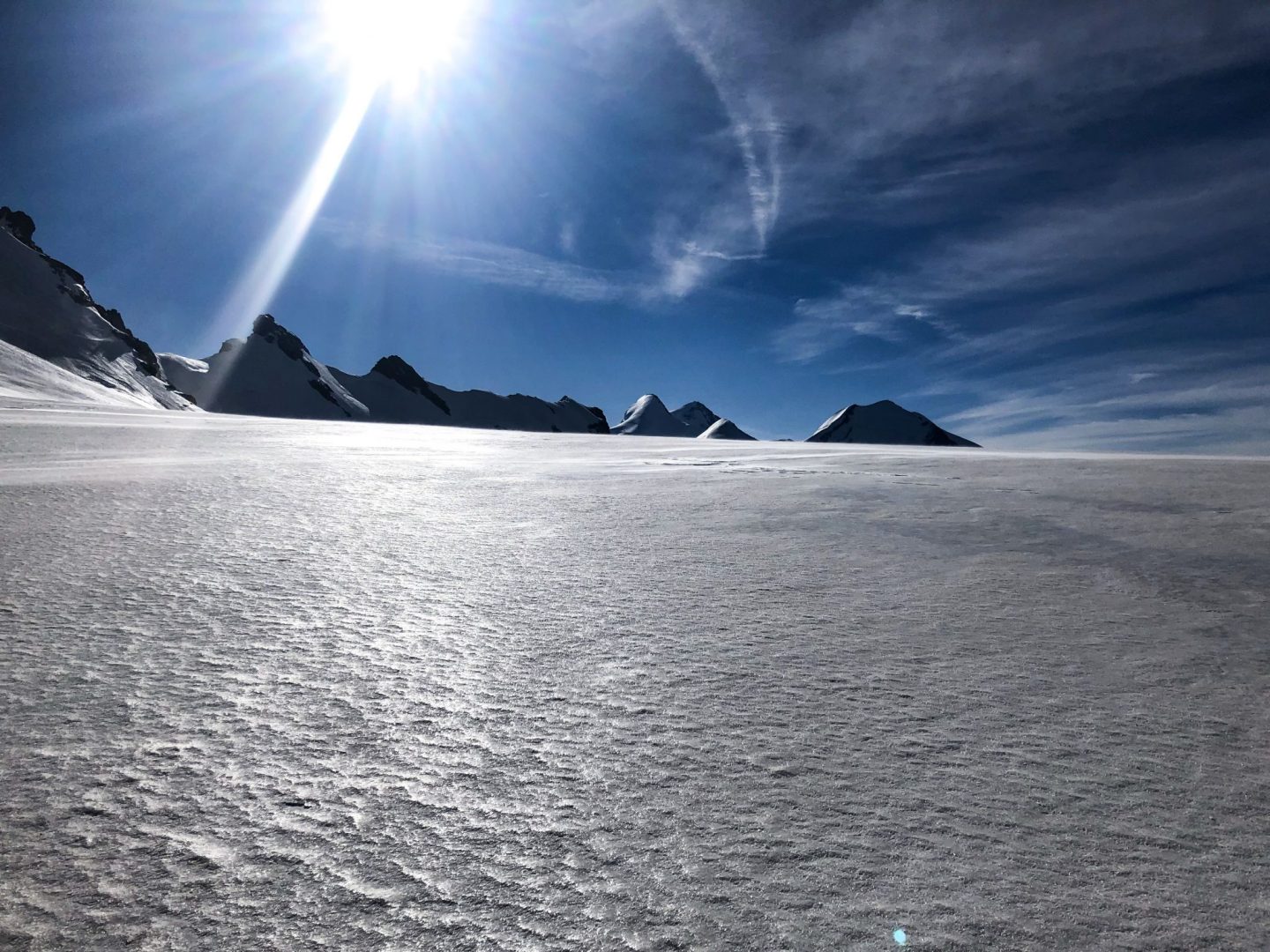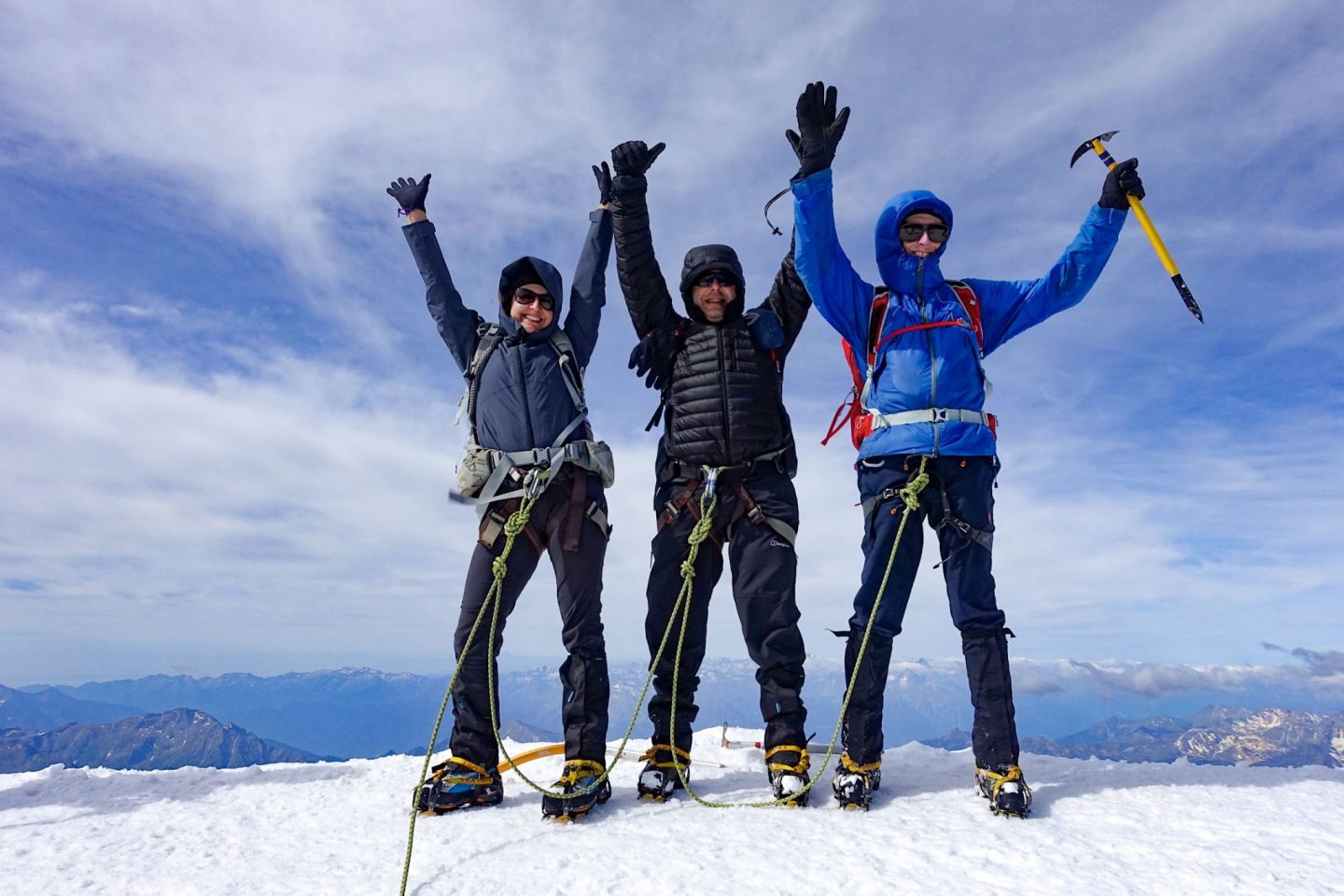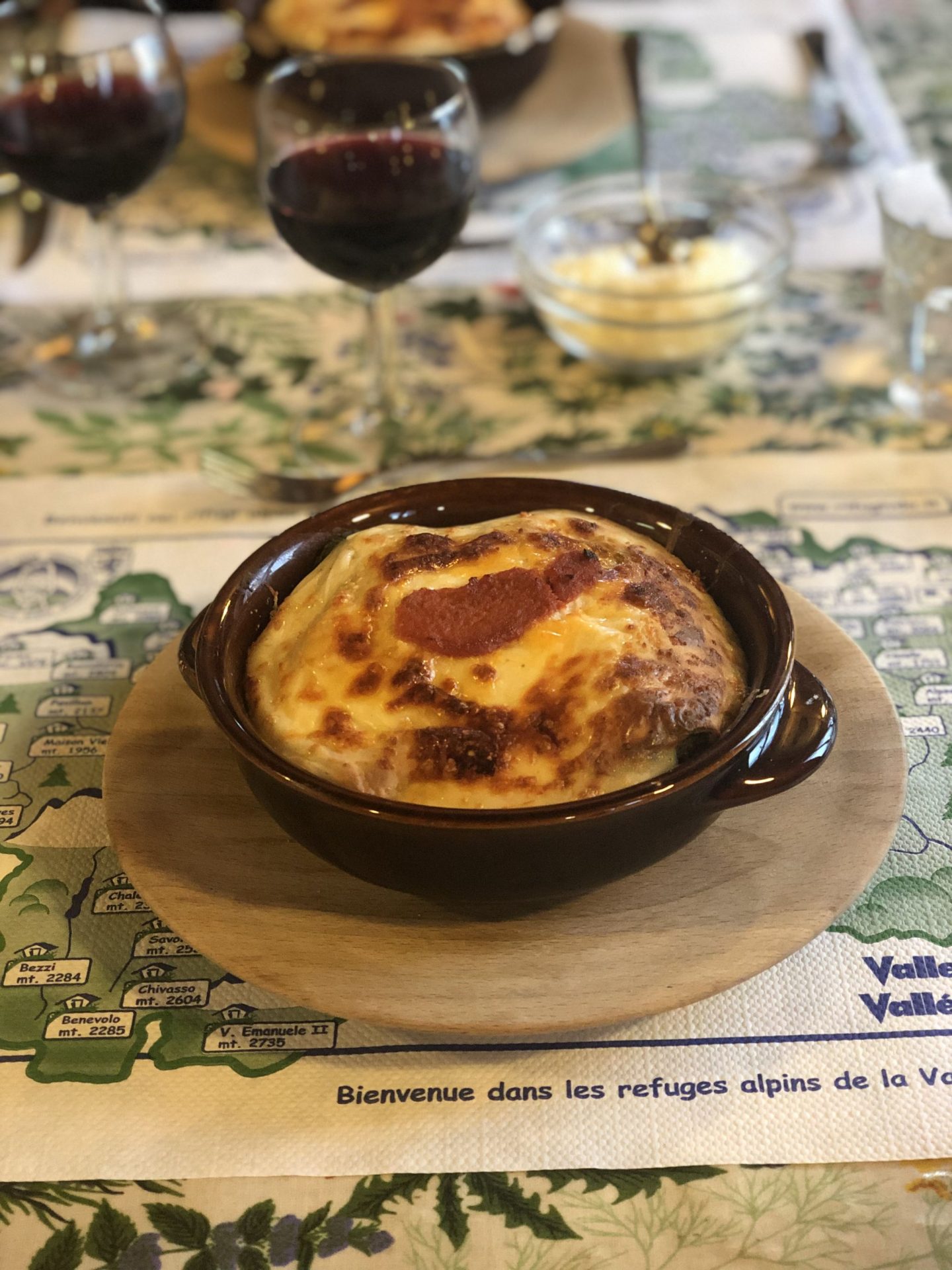I’ve just returned from the Alps where I spent a week climbing glaciers and sleeping in mountain huts on a version of what is known as the Spaghetti Tour. It’s named as such because, although it starts and ends in Switzerland, most nights are spent in Italy eating generous portions of, you guessed it, spaghetti (actually just general pasta, we didn’t have any spaghetti).
There are various routes on the Spaghetti Tour depending on your technical ability, but they all wind along the Swiss-Italian border in the Monte Rosa mountain massif and incorporate at least one of the many 4000m peaks in the area. However, whichever route you take, stunning views and welcoming mountain huts are a guarantee.

This wasn’t my first multi day hiking trip but it was my first glacier experience, my first trip where every night was spent in a mountain hut, and my first time with an ice axe! So I’m sharing 10 things I learnt on the Spaghetti Tour, from how to safely walk on glaciers to several toilet related learnings.
1. Walking in snow is impossible until you know the ‘heel first going downhill, toe first going uphill rule’
The first day of our Spaghetti Tour trip was spent acclimatising and learning the basics of glacier travel. As soon as I stepped onto the snow my brain filled with doubt as I was literally unable to take a single step without falling over. I quickly learnt how to ‘cut’ the snow with the front and side of my boots and how to place my weight, and by the end of the Spaghetti Tour I was a pro!

2. Crampons are an amazing invention!
Slip these on and you can walk on snow and ice without a thought! I learnt how to put on crampons (much easier than expected) and how to walk in them to ensure that all of the spikes made contact with the ice, which was demonstrated through an amusing exercise of bunny hopping down an icy slope. Walking with flat foot equals no more clumsy Bambi legs from me!
3. People fall into crevasses on glaciers…
… so you’re roped together to prevent falling into the abyss. Whenever we crossed a wet glacier (meaning that it was covered in snow rather than dry ice), we donned our harnesses and connected ropes. By walking in a line with the rope fairly tight between us, if one team member were to fall into a crevasse we’d all drop to the ground and use our weight to hold the fallen soul. Luckily none of our group had any incidents but I met plenty of people who did!
4. Glacier travel requires team work
Being roped together means working as a team to keep the correct distance between you… if the rope is too slack the person in front will trip over it (especially going down hill!), if the rope is too tight the person behind you will be pulling on the rope and making every step feel heavy. Plus as I’ve already mentioned, you need your team to save your life if you fall victim to a crevasse!

5. Ice axes aren’t used to chop things or to attack people who snore in mountain huts.
In our case they were mostly used as walking sticks, held with the shaft pointing downwards to support on steep, snowy slopes. They can also be used as a break if you slip and fall down a hill by digging the pick into the snow, to create foot holes in ice if you don’t have your crampons to hand and to climb ice walls (although we didn’t do any of this).
6. Italian and Swiss mountain huts offer very different experiences.
Italian huts are significantly cheaper (a whole jug of wine cost in Italy cost significantly less than one can of coke in Switzerland), serve incredible food (mountains of pasta, portions of tiramisu the size of your face and so much cheesy goodness) and give you proper coffee at breakfast. However, Swiss mountain huts have sit down toilets so they just about win in my mind. I’ve written a whole post about mountain huts which you can read here.

7. On the subject of toilets, the worst thing about long drops isn’t actually the smell!
It’s the freezing cold breeze on your lady parts when you’re trying to squat down for a wee.
8. Marsh tea smells of mountain hut toilets but tastes delicious!
This walkers tea is available to fill your thermos flask with at breakfast and take on the trail with you. Not only is it super hydrating, but its lovely and sweet and there’s not much better than a hot drink at the top of a cold glacier!
9. STILL on the subject of toilets, having a wee on a glacier as a girl is pretty tricky.
Here’s how: staying connected to the rope (and therefore the rest of your group) walk as far away as the rope lets you (literally a metre or so). There are no rocks or trees to go behind so stand up your rucksack as a sort of hiding place, but make sure it’s not downhill from you! Lift the rope off the ground so you don’t wee on it. Loosen your harness slightly, drop it like a pair of knickers along with the rest of your lower half clothes, ignore the shame and masses of people and go for it!

10. Finally, snacks are life.
This isn’t a new learning as I’m a big fan of snacking, but they’re even more important on a glacier. You can’t stop for a long lunch as it’s cold and dangerous but you’re burning a lot of calories so need to keep those energy levels topped up. My favourite mountain snacks are gummy bears (instant sugar), beef jerky (protein) and Mars bars (because they’re my dad’s favourite so he always has them and if I ask really nicely will give me one).

So there you have it, my learnings from the Spaghetti Tour. What has been your most eye-opening trip, and when have you had the chance to learn new skills on holiday?
If you’d like to read more about hiking, you might enjoy the following posts:
- Mountain Huts: What to Expect and How to Survive
- A Slightly Girlie Guide to Hiking Kit Essentials
- What to Pack for Glacier Hiking in the Alps
- A Guide to Planning, Booking and Walking the West Highland Way
- Mont Blanc to the Matterhorn
- What to Expect on the GR20
- Crib Goch and Snowdon
Nell xx
P.S. If you’re thinking of taking this trip or any other hut-to-hut trip then make sure you read my guide on what to expect from mountain huts and how to survive them.



